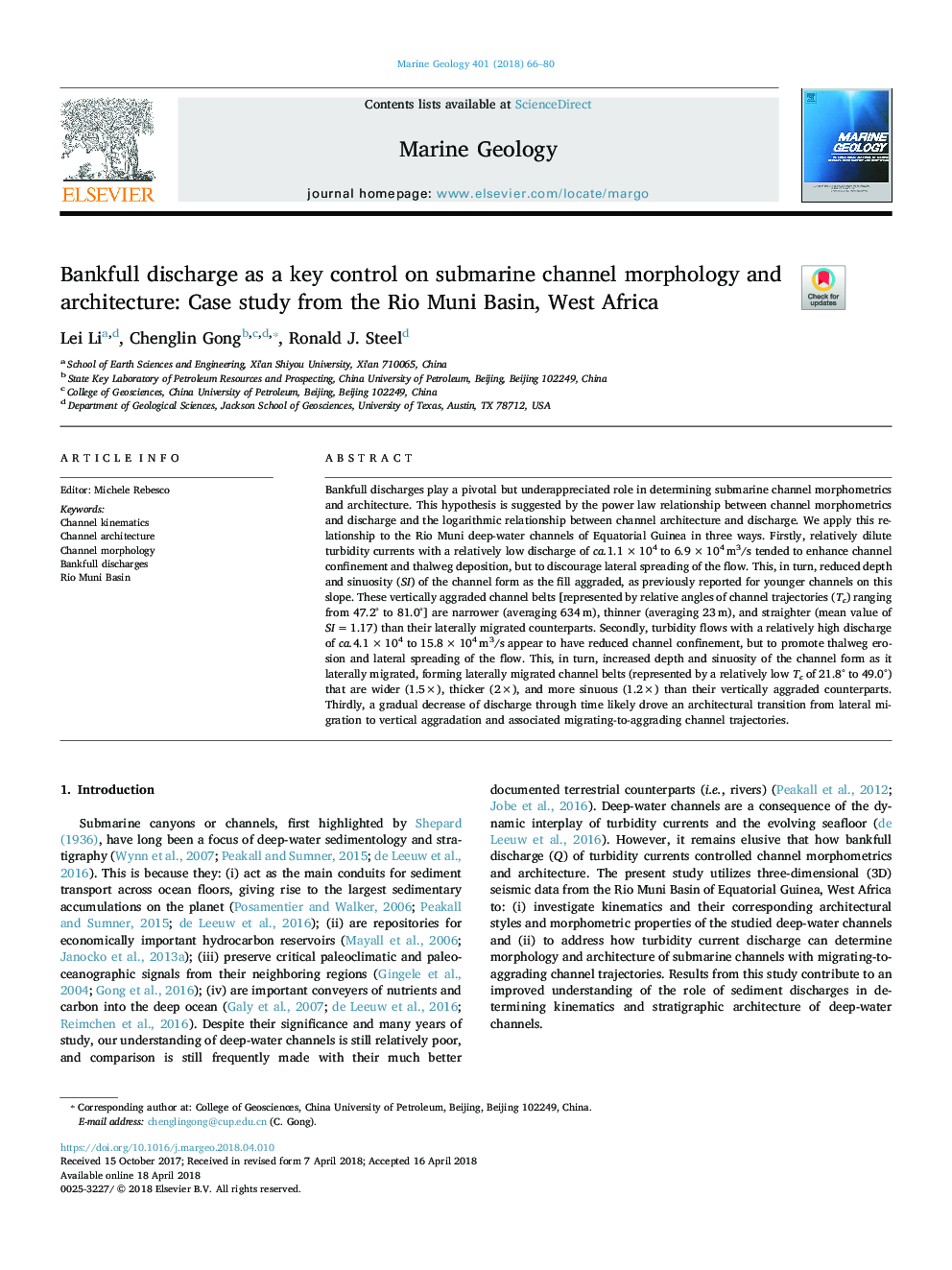| Article ID | Journal | Published Year | Pages | File Type |
|---|---|---|---|---|
| 8911964 | Marine Geology | 2018 | 15 Pages |
Abstract
Bankfull discharges play a pivotal but underappreciated role in determining submarine channel morphometrics and architecture. This hypothesis is suggested by the power law relationship between channel morphometrics and discharge and the logarithmic relationship between channel architecture and discharge. We apply this relationship to the Rio Muni deep-water channels of Equatorial Guinea in three ways. Firstly, relatively dilute turbidity currents with a relatively low discharge of ca.1.1â¯Ãâ¯104 to 6.9â¯Ãâ¯104â¯m3/s tended to enhance channel confinement and thalweg deposition, but to discourage lateral spreading of the flow. This, in turn, reduced depth and sinuosity (SI) of the channel form as the fill aggraded, as previously reported for younger channels on this slope. These vertically aggraded channel belts [represented by relative angles of channel trajectories (Tc) ranging from 47.2° to 81.0°] are narrower (averaging 634â¯m), thinner (averaging 23â¯m), and straighter (mean value of SIâ¯=â¯1.17) than their laterally migrated counterparts. Secondly, turbidity flows with a relatively high discharge of ca.4.1â¯Ãâ¯104 to 15.8â¯Ãâ¯104â¯m3/s appear to have reduced channel confinement, but to promote thalweg erosion and lateral spreading of the flow. This, in turn, increased depth and sinuosity of the channel form as it laterally migrated, forming laterally migrated channel belts (represented by a relatively low Tc of 21.8° to 49.0°) that are wider (1.5Ã), thicker (2Ã), and more sinuous (1.2Ã) than their vertically aggraded counterparts. Thirdly, a gradual decrease of discharge through time likely drove an architectural transition from lateral migration to vertical aggradation and associated migrating-to-aggrading channel trajectories.
Keywords
Related Topics
Physical Sciences and Engineering
Earth and Planetary Sciences
Geochemistry and Petrology
Authors
Lei Li, Chenglin Gong, Ronald J. Steel,
